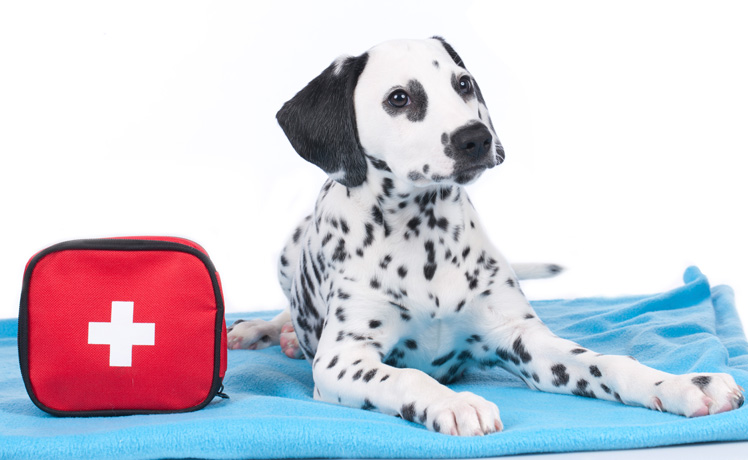Why Flea and Tick Prevention Is Non-Negotiable in Summer
When the temperatures rise, so does the risk for one of your dog’s most irritating and dangerous enemies—fleas and ticks. These tiny parasites may seem like just a nuisance, but they can pose real threats to your pet’s health and comfort, especially during the hot summer months when their activity surges. If you’re a dog owner, it’s important to understand why consistent flea and tick prevention isn’t just a good idea—it’s essential.
Summer: The Super Bowl of Parasite Season
Fleas and ticks thrive in warm, humid weather. Once temperatures consistently climb above 65°F, these pests kick into high gear. In many regions, that means spring through early fall becomes open season for infestations. But summer is the peak—when the combination of heat, moisture, and increased outdoor activity gives fleas and ticks the perfect opportunity to latch on to your furry friend.
Grassy parks, hiking trails, wooded areas, and even your own backyard can be hotspots. And even if your dog spends most of their time indoors, they’re still at risk. You can unknowingly bring these pests inside on your shoes or clothes, or they can hitch a ride on another pet or even enter through open windows. These parasites are sneaky and opportunistic, and they don’t need much of a window to create a problem.
In addition to being incredibly resilient, both fleas and ticks reproduce at alarming rates. A single flea can lay up to 50 eggs a day, and once those eggs hatch, the infestation can spread rapidly. Tick populations can also explode in the summer, especially in areas with dense vegetation. Once ticks find a host, they can attach for several days, feeding on blood and potentially transmitting dangerous pathogens.
The Hidden Dangers of Fleas and Ticks
Many people underestimate just how serious a flea or tick problem can become. These aren’t just annoying pests that make your dog scratch—both fleas and ticks are capable of causing significant health issues if not addressed.
Fleas can lead to allergic reactions, hot spots, hair loss, and even anemia from blood loss in severe infestations. One of the most common conditions caused by fleas is Flea Allergy Dermatitis (FAD), which results in severe itching and inflammation due to an allergic reaction to flea saliva. In puppies or smaller dogs, heavy infestations can lead to dangerous levels of blood loss and overall weakness.
Additionally, fleas are carriers of tapeworms. If your dog ingests a flea while grooming, they could also ingest the tapeworm larvae. This leads to another cycle of parasites living in your dog’s digestive tract, which can cause weight loss, abdominal discomfort, and other issues.
Ticks, on the other hand, are even more dangerous. They can transmit several life-threatening illnesses, including Lyme disease, ehrlichiosis, anaplasmosis, and Rocky Mountain spotted fever. Some of these diseases can affect not just your dog, but humans as well—making this more than just a pet problem. Symptoms of tick-borne diseases may take weeks to show up and can range from fever and lethargy to joint swelling, paralysis, and in severe cases, even death.
One of the scariest aspects of tick-borne illnesses is how difficult they can be to diagnose. Many symptoms mimic other health problems, and by the time a disease is correctly identified, it may have already done significant damage. That’s why prevention is far more effective and less risky than treatment.
What to Look Out For
Being proactive starts with knowing what to watch for. Fleas are typically easier to spot, especially if your dog is scratching more than usual or you see tiny dark specs in their fur (commonly known as flea dirt, which is actually flea feces). You may even see fleas hopping around if the infestation is advanced. Dogs with flea infestations often exhibit signs like restless behavior, frequent biting or chewing at their skin, and skin inflammation.
Ticks are a bit trickier. They embed themselves in your dog’s skin, usually around the ears, neck, underarms, between toes, or near the tail. You may not notice them unless you’re doing regular checks, so it’s important to get in the habit of running your hands over your dog’s body after outdoor activities—especially if they’ve been in grassy or wooded areas. Unlike fleas, ticks don’t move around once they’ve attached, which makes them easier to miss if you’re not looking closely.
Sometimes, the first sign of a tick isn’t visual—it’s a behavioral change. Your dog might seem more tired than usual, experience stiffness in their joints, or develop a fever. These subtle symptoms can easily go unnoticed until they worsen, which is why checking your dog regularly is so crucial.
Prevention Is Better Than Cure—Always
The good news? Flea and tick issues are almost entirely preventable with consistent, veterinarian-approved products. From topical treatments and oral medications to collars and sprays, there are plenty of options designed to keep these pests at bay. The key is consistency—missing even a month of treatment can open the door to infestation.
It’s worth noting that not all prevention products are created equal. Some over-the-counter treatments aren’t as effective or safe, especially for pets with sensitivities. Your vet can help you determine the best product for your dog’s breed, age, size, and health history. They may also recommend year-round prevention, especially if you live in a warmer climate where fleas and ticks remain active outside of summer.
There are even newer innovations in parasite prevention, such as extended-release oral medications that last several months. These products make it easier than ever to stay on top of prevention without monthly applications. However, it’s still essential to follow instructions carefully and ensure you’re using products that are appropriate for your pet’s weight and age.
Integrated Protection: It’s Not Just About One Product
While using a preventative is critical, it’s not the only step. Flea and tick prevention is most effective when combined with smart habits and a clean environment. That includes keeping your yard trimmed and treated, washing your dog’s bedding regularly, vacuuming high-traffic pet areas, and watching for signs of pests on all household pets. If you have a yard, talk to your pest control provider about pet-safe options to reduce outdoor exposure.
If your dog swims frequently or is groomed often, make sure their treatment remains active after water exposure. Not all flea and tick medications are waterproof, so it’s important to follow the guidelines on the product packaging or ask your vet for alternatives that suit an active lifestyle.
Also, be mindful of the areas you visit during walks or hikes. Some parks or trails may be more prone to tick populations, particularly those with high grass, thick brush, or nearby wildlife. Staying on marked trails and avoiding underbrush can reduce your dog’s chances of picking up ticks. For extra precaution, consider using a fine-toothed flea comb after outings to catch any unwanted hitchhikers.
The Comfort Factor: Happy Dogs Are Protected Dogs
Let’s not forget one of the most important reasons to protect your dog from fleas and ticks: their happiness. Itchy skin, painful bites, and constant scratching can make your pup miserable—and no one wants to see their best friend suffer. Preventing parasites helps your dog stay comfortable and active all summer long.
And if your dog is a frequent visitor to dog parks, beaches, or daycare facilities, prevention is especially important to avoid spreading pests to other pets. It’s a small act of responsibility that can make a big difference in keeping your community safe and healthy. Flea and tick prevention is not just about individual protection; it’s about communal wellness.
Keeping your dog protected also strengthens your bond. Dogs thrive on physical affection, play, and being outdoors—all of which are easier to enjoy when they’re free from discomfort. A pest-free pup is a happy pup, and a happy pup is a joyful companion for your summer adventures.
Year After Year, Prevention Pays Off
When it comes to fleas and ticks, prevention is always more affordable—and far less stressful—than treatment. Dealing with an infestation can mean weeks of cleaning, repeated vet visits, and long-term health consequences. By staying one step ahead, you protect your dog from discomfort, disease, and unnecessary vet bills.
Many dog owners learn the hard way that skipping a dose or thinking “it won’t happen to us” can quickly lead to an overwhelming and costly problem. Prevention offers peace of mind, knowing you’re giving your dog the best defense against something you may not even see coming. It’s a simple routine that brings lasting results.
So as summer kicks into high gear, don’t wait. Talk to your vet, stock up on prevention products, and commit to checking your dog regularly. Flea and tick prevention isn’t just another item on your pet care list—it’s an essential part of keeping your dog healthy, happy, and safe all summer long.
Don’t let parasites spoil the best season of the year for you and your pup. Take action now, and enjoy a summer full of tail wags, long walks, and carefree play—without the itching, scratching, and risk.







